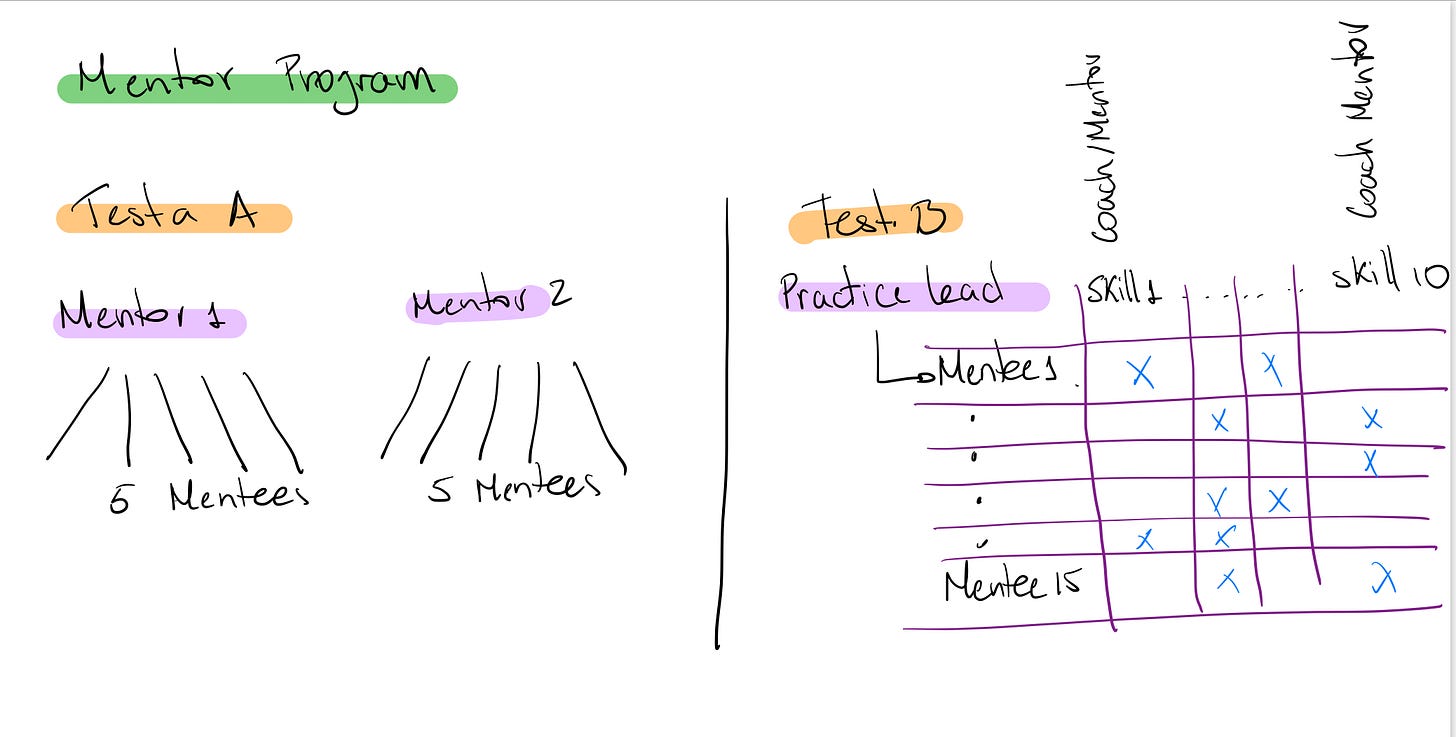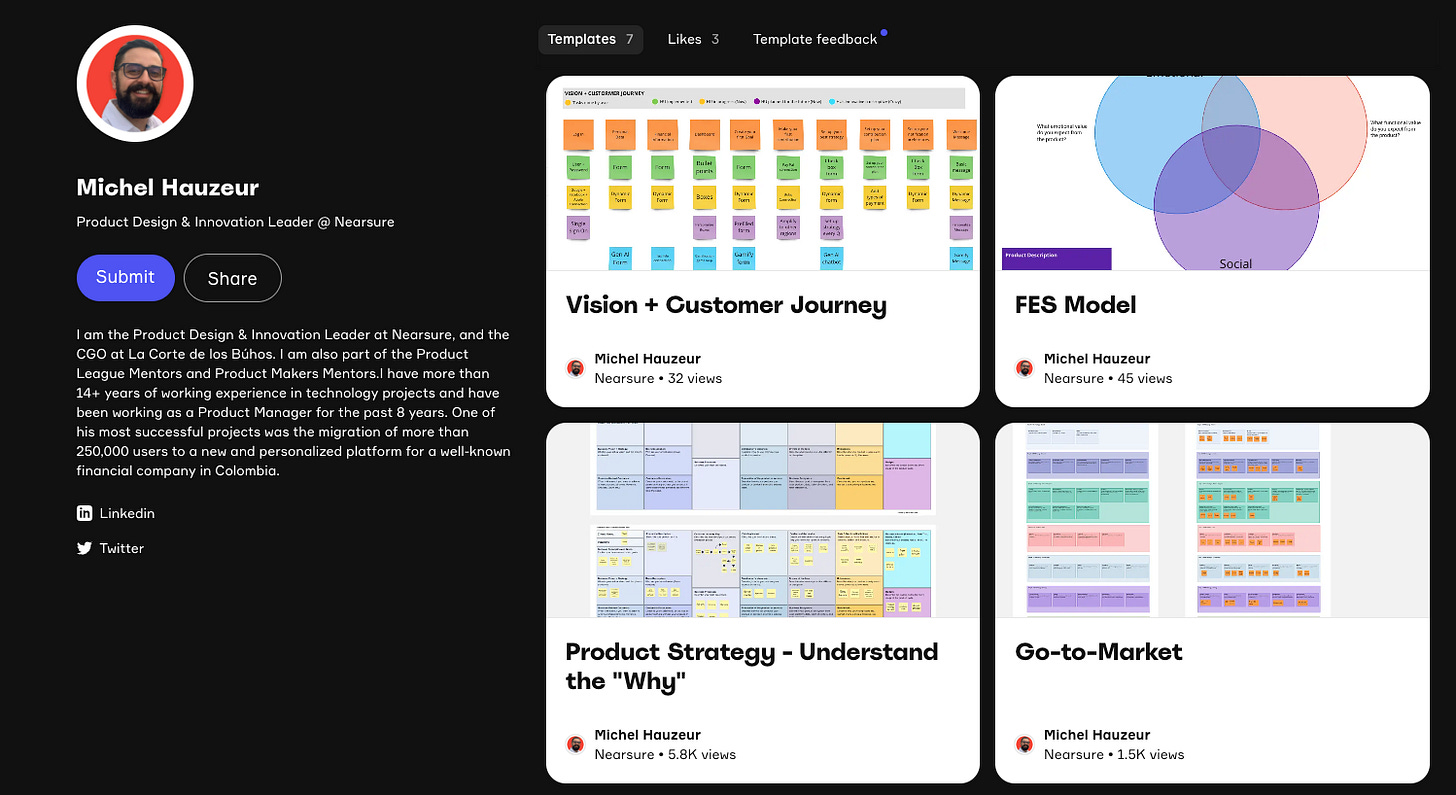How to create a team structure based on innovation and experimentation - Chapter 4
This is a six chapter journey where I will share my process to get into an ideal structure.
Hi readers, my name is Michel Hauzeur, and I am a soccer lover and a father of my little warrior called Mila and Baloo (rescued dog)
Currently Product Design & Innovation Leader at Nearsure with 14+ years of experience in product & tech. I’m also a Co-founder of La corte de los Búhos, a Digital Transformation consulting company in Latam, and a Gamification consultant.
Mentor in the Product League and Product Makers Mentors program for 2+ years.
And 2023 Product-Led Alliance Award as Product Leader of the Year winner.
Six chapters journey:
Chapter 4: Team building implementation (This article)
Chapter 5: Center of Excellence definition
Chapter 6: Innovation and Experimentation through team building
Before starting, I want to thank you for reaching the fourth chapter!
Let´s continue…
Chapter 4: Team Building Implementation
Section 1. Team structure Iteration
Chapter 3 recap:
In Chapter 3, I talked about the Team Structure, the roles that support the team, the goals I am trying to achieve in the studio, and the results.
During the first month of implementation, we define the mentor program and select the candidates. Then we trained the Mentors / Coaches about the purpose of the new structure and our vision, and we also assigned the team members to each coach.
Here starts the Chapter 4:
As I mentioned before, the interaction was one of the biggest challenges we faced in getting the results, then with the Practice Leaders, we defined that the best way to launch this new structure among the team was through the Studio Sync meeting where the Studio Leader and Practice Leaders lead the session, and Team members participate.
The launch was amazing, we had more than 15 days to prepare the plan, content, and presentation structure. Everyone was so happy and excited about the support they would receive from us.
Right after the launch, we sent the new structure and plan, opened channels for comments, doubts, and suggestions, and sent the series of meetings to be ready. From a comments perspective, everything was positive, people were eager to know and starting to talk with their Coach/Mentor.
So, how did we start to iterate the plan?
The Practice Leader implemented the Practice Assessment. This assessment was 3 step process, where we analyzed the seniority level of each team member, regarding his/her practice knowledge and experience.
Once the Assessment was ready, we shared the career path plan with the mentor to start giving the right support on the right skills.
The Coaching/Mentor session was arranged between the Coach/Mentor and the Mentee.
The Coaching/Mentor Committee was every 15 days at the start and then we moved it to once a month. This committee was created to align methodology, and frameworks and to bring some specific issues to discuss.
The Practice Lead had a monthly session with every team member to analyze the progress of the career path.
The implementation started around five months ago (March to July 2024), and through these months we have identified some minor problems that were solved and other major problems that required an action plan.
Section 2. Feedback and Insights
During these four months, let's say that we had a month for alignment, another month to start moving the wheel, and three months where we have been testing the structure.
I know it is a long time, but structures like this are not easy to implement and it is more difficult in companies that are integrating and changing at the same time.
So, regarding these three months, we have identified the following problems:
The Coaches/Mentors don’t have enough time to meet the mentee.
The Mentees don’t have a clear path to meet with the Coaches/Mentors.
The Practice Leaders don’t have enough time to support all the team members.
If we analyze all the problems are connected. If a Coach/Mentor doesn’t have time, then the Practice Lead will need to take charge of the career path program to support and follow-up. If the Practice Lead doesn’t have enough time, we will lose trust in the program and our vision will be disconnected.
As you know, I love to use the “Opportunity Solution Tree” from Teresa Torres, to solve problems. (If this technique is new to you, please read Chapter 1).
So, how are we solving this issue? By applying the framework.
Problem: Low support from our Coaches/Mentors, only 60% of the Mentees received support.
Desired Outcome: 100% of the Mentees required at least two sessions of support per month.
Opportunities:
Opportunity 1: Change those Coaches/Mentors for new ones.
Opportunity 2: Pivot between Coaches/Mentors and Practice Leads.
Opportunity 3: Asign the Support only to the Practice Lead.
Solutions: Among the three opportunities we discarded the third one because the Practice Lead was not 100% available to support more than 15 team members and give them the right amount of sessions.
Regarding the other two, we think it is a good idea to do an A/B test to identify which opportunity makes more sense for the team and each practice.
One of my favorite hobbies.
Section 3. Experimentation
Experiment: The experiment we will apply starting this coming month (August 2024), consists in:
Test A: Change the actual Coaches/Mentors for others with high seniority and experience. In some cases, we will reduce the number of Mentees.
Teste B: The Practice Lead will manage the Career path of each team member but is the Coach/Mentor on a specific skill who will support, train, and guide the team member, based on what the Practice Leader identifies on the career path plan.
In this case, we are not attaching a Coach/Mentor vs a Mentee, but we will attach a Coach/Mentor to an area of expertise.
If you have some doubts about how the structure will work, this is a more visual representation:
Test A will be implemented by the Design Practice and Test B by the Product Practice, or the other way around.
Once we finish these six chapters, I will share with you through this same blog, the results of my second iteration, so I invite you to subscribe
To understand how we define the CoE (Center of Excellence) wait for Chapter 5.
Thanks for reading!!!
Check here my new templates in Miroverse
Don´t close this tab before sharing this content.
I think of myself as a product, so please leave a comment so I can keep improving my content. Thanks!








